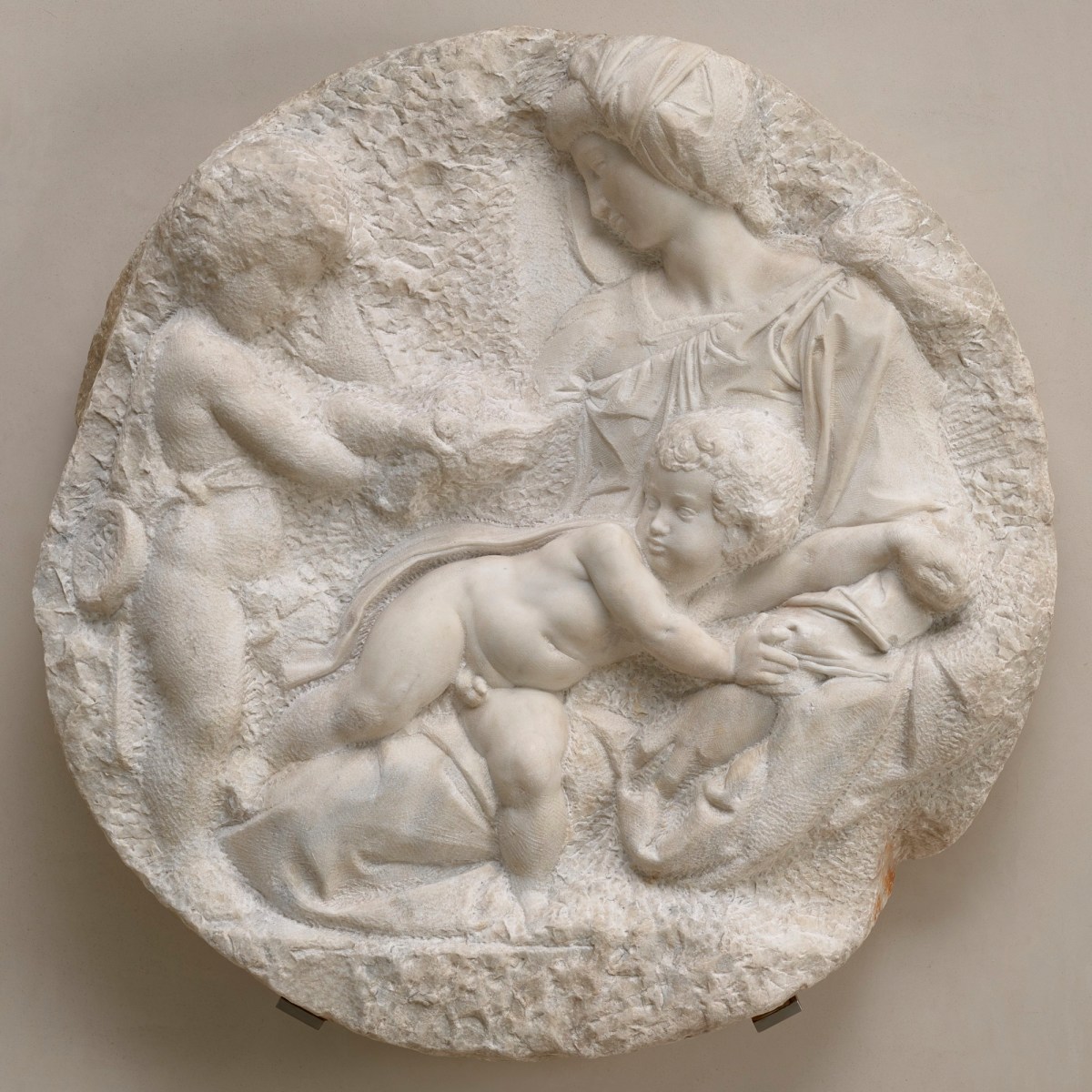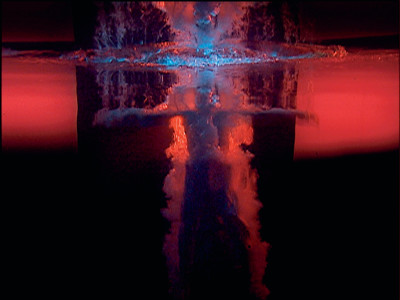
Michelangelo Buonarroti, The Virgin and Child with the Infant St John, ca. 1504-05.
Marble relief. 1068 mm. © Photo: Royal Academy of Arts, London. Photographer: Prudence Cuming Associates Limited.
This image is not available to download. To licence this image for commercial purposes, contact our Picture Library at picturelibrary@royalacademy.org.uk
The Virgin and Child with the Infant St John, ca. 1504-05
Michelangelo Buonarroti (1475 - 1564)
RA Collection: Art
The 'Taddei Tondo' is the only marble sculpture by Michelangelo in Great Britain. Commissioned by Taddeo Taddei, it remained in the Casa Taddei, Florence, until the early nineteenth-century when it was in the possession of Jean-Bapiste Wicar in Rome. Sir George Beaumont purchased the sculpture in 1822 and bequeathed it to the Royal Academy.
At the left side of the tondo stands the infant figure of St. John the Baptist, with his attribute of a baptismal bowl. He presents what appears to be a goldfinch (representing the Passion) to the infant Christ, who momentarily turns away, towards his mother, symbolically anticipating his future destiny.
The relief is believed to have been executed ca.1504-1505 when Michelangelo was working in Florence. At this time he executed two other circular compositions, a painting, the 'Doni Tondo' (Uffizi, Florence) and a marble relief, the 'Pitti Tondo' (Bargello, Florence).
The 'Taddei Tondo' is one of several unfinished sculptural works by Michelangelo, which, since the sixteenth-century, have been the focus of much scholarly debate. It is likely that Michelangelo abandoned some of his sculptures on account of his being over-committed to too many projects. Giorgio Vasari (1511-1574) suggested that he did not complete certain compositions out of creative frustration, an idea, which has crystallised into the notion of the artist as troubled genius.
C.R. Cockerell described seeing the tondo at Beaumont's estate in 1823 as a "great treat." The unfinished state of the sculpture with its contrasting rough and smooth surfaces did not deter, but enhanced his visual enjoyment of it. He insightfully noted in his diary that:
'the subject seems growing from the marble & emerging into life. it assumes by degrees its shape, features from an unformed mass. as it were you trace & watch its birth from the sculptor's mind as you would an animal from its birth, the chicken breaking thro' its shell. I have seen nothing but this that conveys the idea in the Greek epigram of a sculptor who says I have no merit but discovering the form which lies within the marble. one feels in beholding it to desire still to go on discovering, still to disclose more.'
Object details
1068 mm
Associated works of art
2 results
Start exploring the RA Collection
- Explore art works, paint-smeared palettes, scribbled letters and more...
- Artists and architects have run the RA for 250 years.
Our Collection is a record of them.





